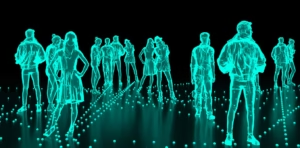
Holograms You Can Touch: The Next Dimension of Tech
We’ve seen holograms in science fiction for years—think Star Wars, Iron Man, or futuristic concerts with long-gone artists. But now, they’re stepping out of the screen and into the real world, and they’re not just for looking at anymore…
You can actually touch them.
Yes, you read that right: Touchable holograms are no longer a fantasy—they’re a fast-approaching reality, and they could change how we work, play, and even connect with others.
🌐 What Are Touchable Holograms?
Regular holograms are 3D light projections that appear to float in space, but you can’t physically interact with them.
Touchable holograms—or haptic holograms—combine holographic visuals with tactile feedback. Using ultrasonic waves, air pressure, or advanced sensors, these systems let you feel the hologram as if it were solid.
Imagine:
-
Shaking hands with a virtual person
-
Pressing a holographic button
-
Sculpting a 3D model mid-air without ever touching a screen
It’s not magic. It’s next-gen science.
🧪 How Does It Work?
Several cutting-edge technologies make this possible:
1. Ultrasonic Waves
Some systems use precisely focused ultrasound to generate pressure points in the air that stimulate your skin. You’ll feel vibration or resistance as your hand moves through a hologram.
2. Air Jets or Airflow Manipulation
Directed bursts of air can simulate the feeling of touch when you interact with projected objects.
3. Laser Plasma Holograms
Still in early stages, these use ultra-short laser pulses to ionize air and create visible, touchable points of light—with no screen required.
4. Wearable Haptic Gloves
Some approaches use gloves with feedback motors to simulate sensation as your hands “touch” a holographic object.
🚀 Real-World Applications
This isn’t just about cool visuals. Touchable holograms are poised to transform entire industries:
🏥 Medicine
Surgeons could practice procedures on holographic organs that feel real, offering hands-on training without any risk.
🛠️ Engineering & Design
Designers can sculpt and interact with 3D prototypes in mid-air, modifying virtual objects by hand before manufacturing begins.
🛒 Retail & Shopping
Try on a watch or pick up a holographic shoe in a virtual showroom—and feel its texture, shape, and size before buying.
🧠 Education
Imagine biology students touching a beating heart or chemistry students assembling molecules—all from their classroom desk.
🎮 Gaming & Entertainment
Virtual reality games and concerts could become truly multi-sensory. Think swordfights where you feel the clash, or virtual instruments you can actually “play.”
🔍 Who’s Leading the Way?
-
Ultraleap (UK): Using ultrasound to create mid-air touch sensations.
-
Sony: Developing haptic feedback interfaces for virtual interactions.
-
University of Tokyo: Pioneered “Fairy Lights,” a tech that creates touchable plasma holograms using lasers.
-
Microsoft & Meta: Exploring haptic integration with augmented reality systems like HoloLens and Quest.
🧩 Challenges Ahead
While the possibilities are exciting, several hurdles remain:
-
High Cost: The tech is still expensive and not yet consumer-friendly.
-
Limited Precision: Touch sensations are currently simple (pressure, vibration), not complex textures.
-
Safety & Regulation: Especially for laser-based systems, safety standards need to evolve.
But as with all disruptive tech, miniaturization, affordability, and refinement are just a matter of time.
🔮 The Future of Human–Tech Interaction
Touchable holograms are more than just eye candy—they represent a paradigm shift. As we move beyond screens and buttons, we’ll soon interact with digital content as naturally as we do with physical objects.
Imagine a world where:
-
Doctors consult in 3D
-
Teams collaborate across continents using shared holograms
-
You reach out and touch your memories
We’re not just bringing visuals to life—we’re bringing sensation into the digital realm.
🧠 Final Thought
“Holograms you can touch” isn’t science fiction anymore. It’s the next frontier in immersive tech—and it’s coming faster than you think.
Touch, once exclusive to the physical world, is becoming a digital experience. The line between real and virtual is blurring—and soon, you won’t just see the future.
You’ll feel it.